What is the color temperature of light and the nuances of choosing the temperature of the lamps to suit your needs
Artificial light affects the well-being of people, the comfort of being indoors. In addition to brightness, the color temperature of the lighting device will play an important role in the perception of space - the indicator determines the shade of radiation and the priority scope of use of the lamp.
This parameter should definitely be taken into account when developing light-interior design for an apartment, house or any other room. We will talk about how to choose a lighting device based on temperature and color rendering index. In the article we presented, recommendations are given to future buyers.
The content of the article:
The concept of color temperature
Color temperature (CT) characterizes the intensity of the light bulb, determines the composition of the visible spectrum. The indicator does not indicate the amount of heat given off, its value is the visual perception of the light flux by the human eye.
However, such a name has a logical scientific explanation.
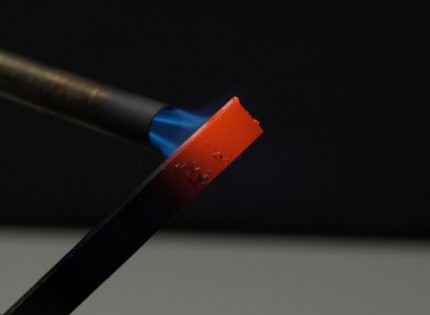
A similar analogy is seen in evaluating the luminosity of light sources. Incandescent lamps they begin to glow at 1200 K, heating to 2000 K will give an orange light, and at 3000 K it will give a yellow light. Increasing to 3500 K will lead to melting of the tungsten spiral.
The emission spectrum of LED crystals is different. The difference is due to different methods of origin, but the general principle is the same - getting the right shade requires a certain color temperature.
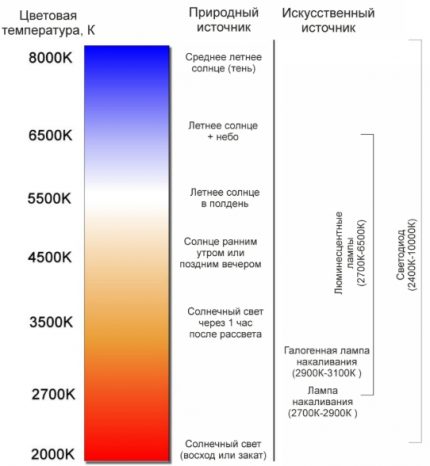
Understanding DT has gained relevance with the advent of various light sources.Each device is characterized by a certain range of spectral composition of the radiation. Incandescent lamps give off a warm, yellow light output.
Introducing halogen, luminescent sources made it possible to use the "cold" glow in everyday life. LED light bulbs possess a wide range of light temperature, the shade depends on the semiconductor used.
Features of color perception
In everyday life, the concept of light temperature is used in the design of interiors, the selection of lamps in offices, production shops, etc. It is proved that a person reacts to a change in illumination - in some cases, activation of activity is observed, in others, on the contrary, relaxation of the body.
DT and color rendering index
The color rendering coefficient - Ra or CRL is of great importance on the quality of lighting. The parameter determines the ability of the light source to transmit the clarity of objects, namely, the realism of the illuminated object.
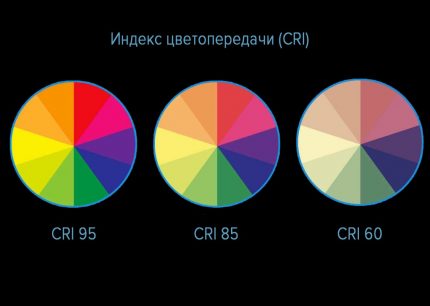
Highest color rendering for incandescent and halogen lights, the parameter Ra is 99-100.
In everyday life, lighting devices with indicators have found application:
- 100˃Ra˃90 - Excellent light transmission properties are characteristic of fluorescent bulbs with a five-component phosphor, LED and metal halide lamps;
- 89˃Ra˃80 - LED lamps, fluorescent devices equipped with a three-component phosphor;
- 80˃Ra - low color rendering quality; it can be used in utility rooms, a corridor or for lighting a road.
When choosing a lamp, it is important to consider that devices with the same light temperature can significantly differ in color rendering quality. Before buying, it is worth comparing both parameters.

In everyday life, do not use devices with a Ra value of less than 80. Lamps with a maximum degree of color rendition are suitable for framing and highlighting mirrors.
The effect of light on emotions
The spread of LED-technology, a variety of shapes of lamps and chandeliers can not only reduce energy costs, but also to choose the shade LED light bulbs under the function of the room.
This aspect has a noticeable effect on the well-being of people, activates the brain, increases productivity, or, conversely, promotes rest and relaxation.
Human exposure to lighting:
- bright warm light invigorates, helps wake up faster in the morning, and sets in the evening in a calm mood;
- cold shade increases concentration, but its constant effect tires, leads to insomnia;
- intense lighting activates the body;
- warm tones help to relax, relax and fall asleep.
To increase the comfort of living, improve working conditions, dynamic solutions are being developed - lighting systems focused on human needs.
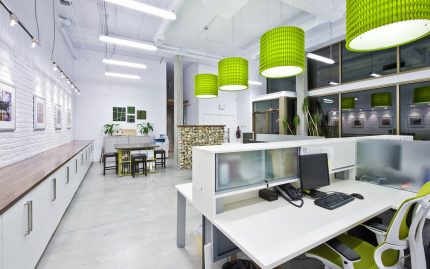
Such solutions are implemented in European countries and the United States when arranging hospitals, offices, industrial and residential premises.
The relationship of light and DH
Research by the Dutch physicist Cruithof (Arie andries kruithof) confirmed the relationship between color temperature and light intensity.
For example, a lamp with a CT index of 2700 K, emitting a luminous flux of 200 Lx, creates a comfortable light. However table lamp with twice the power and the same color temperature, it seems too yellow and quickly starts to annoy.

The optimum color temperature is perceived as a white glow and is close in sensations to natural sunlight.
Some luminaire manufacturers offer custom luminaires. And engineers optimize light brightness and color temperature. The user independently chooses the most convenient mode.
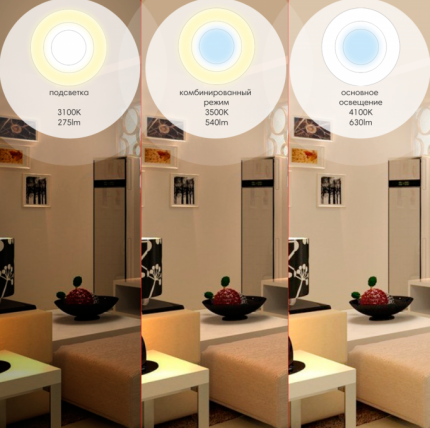
The combined version resembles daylight, has a neutral effect on the person and is suitable for everyday activities.
Temperature scale and marking
The Kelvin temperature scale clearly shows which CT metric corresponds to the color of the radiation. This gradation helps to determine the type of lighting device.

The daylight indicator ranges from 4000-5000 K. Lamps with cold bluish tones with a CT value of 5000-6500 K are almost not used in residential premises, their main area of operation is museums, jewelry stores.
Manufacturer on packaging indicates lighting characteristics. This rule applies to all types of bulbs. Often, brief information is duplicated on the base or radiator of the lamp itself.
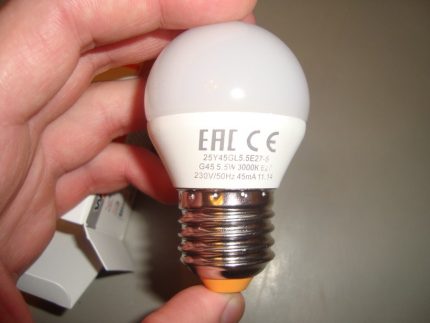
Fluorescent lights are labeled according to internationally accepted standards. Last three digits on mercury bulb - cipher of color rendition and color temperature.
The first marker indicates the index Ra. The number 9 corresponds to a high level of color rendering Ra = 90-100, a value of 8 means that Ra is in the range of 80-89, etc.
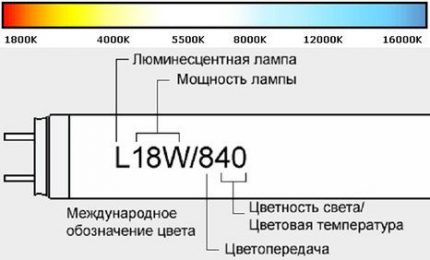
For example, 40 advises the color of light at 4000 K. Such a lamp has a neutral glow, suitable for arranging workplaces, kitchens.
Central lighting fixtures and their application
The color temperature scale is usually divided into three categories of emitted light: warm, cold and neutral. Each shade in its own way affects the well-being of a person and the perception of the interior.
Group # 1 - warm light appliances
The glow resembles the soft rays of the morning sun. The color temperature range is 2700-3000 K. This shade is pleasant to most people, it does not bother or annoy. This is the most familiar light, as close as possible to the rays from incandescent lamps.
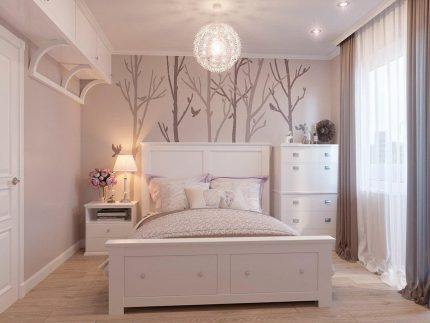
Designers skillfully use warm light to give the room an atmosphere of coziness and comfort.
The effect of glow on space is as follows:
- yellow, brown and red elements of a decor look more saturated;
- cold tones fade somewhat - blue may fade, violet remotely resembles red, and turquoise appear greenish;
- luminaires are suitable for rooms decorated mainly in warm colors;
- lighting is optimal for compact rooms, in spacious apartments there may be a lack of light.
A warm shade is associated with calm, ease.It perfectly complements home interiors. Such light is especially relevant in a space filled with wood, soft textiles, antique products.
In public buildings, such lamps are used in beauty studios, compact boutiques, cozy cafes, in the wards of medical institutions.
Group # 2 - cold shades of lamps
Cold-type lighting is optimal for work, so the lamps are in demand in production shops, office centers, libraries, schools.
The cold light CT exceeds 4500 K. The features of its use in the room are as follows:
- at home, such a light should be used metered, for example, as a local desktop backlight;
- rays make gray, blue tones and other shades of the blue spectrum brighter;
- green elements can “play” with an interesting emerald color;
- the perception of warm tones is distorted;
- cold rays seem brighter, so they are used with caution in a limited space, the preference is for large rooms.
Designers often use such light in innovative design areas. He emphasizes the severity of lines and constructivism, focuses on contrasts.
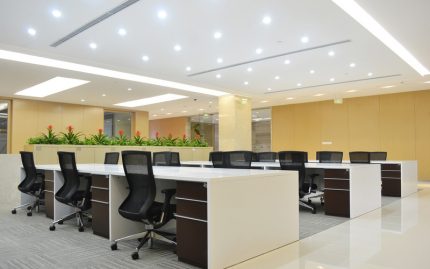
In everyday life, it can be used in the dressing room or the bathroom - for quick waking up. In the interior of the living room, kitchen, cold tone is used carefully, otherwise you can get the effect of the "hospital room".
Group # 3 - neutral light bulbs
Lamps with a color range of 3200-4500 K are suitable for various rooms in the house. This may be the main lighting of the living room, corridor, children's room, dining area or kitchen.
Neutral light is indispensable near the dressing table, in the hallway - where it is customary to dress and create an image before going out.
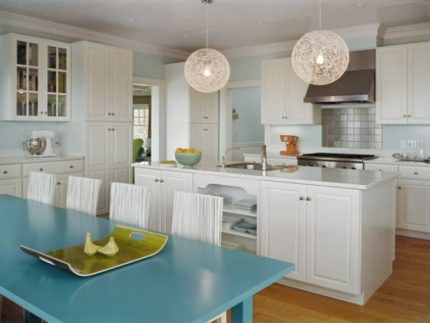
In addition to the design of living space, neutral color lamps are suitable for public buildings, classrooms, classes. Neutral lighting does not put a strain on the eyes, which is why it is often used in offices.
Techniques for combining fixtures
The combination of light sources of different glow temperatures in one room is extremely undesirable. It is not recommended to screw cold and warm lamps into one chandelier or use their combination in spotlighting of a limited space.
Despite the indicated taboo, designers distinguish 4 options when the combination of tones is possible:
- Different color temperatures are involved separately in the dominant and accent light. Spotlights of a different tone will do. This lighting is designed to emphasize interior details: a beautiful picture, texture of wall decoration, etc.
- Light zoning of space. This reception is suitable for kitchen studios, open offices. Lamps with cold, warm or neutral light are placed in separate functional areas. It is important to observe the rule of minimal contact of contrasting rays.
- A combination of warm and cold tones with universal light is acceptable.
- Implementation of lighting schemes. Project development requires a competent approach. All scenarios should be autonomous - lamps of a certain color group are turned on individually.
The latter option is used most often. For example, in the bedroom, the main light is made warm, and the lighting at the dressing table is neutral.
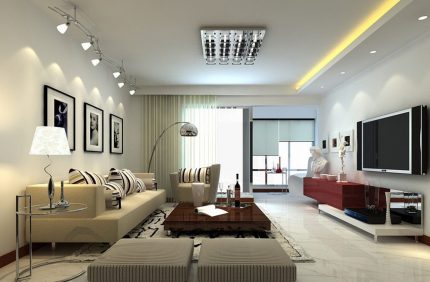
Separately, cold lighting of photographs is provided. In the design of the living room, the streams of light of different color temperatures do not intersect.
Conclusions and useful video on the topic
Color temperature spectrum of lighting devices, recommendations for choosing lamps for different rooms:
The human eye responds to any deviations in color temperature. Changing this parameter affects performance, psychological and emotional state.
The creation of a harmonious interior, the arrangement of an office or other premises requires the mandatory consideration of the shade of the radiation from the lamps and their selection for the operating conditions.
Want to talk about how to choose a light bulb in accordance with your pleasant color temperature? Tell us why you chose this option? Please write comments in the block below, share useful information and ask questions about the topic of the article.

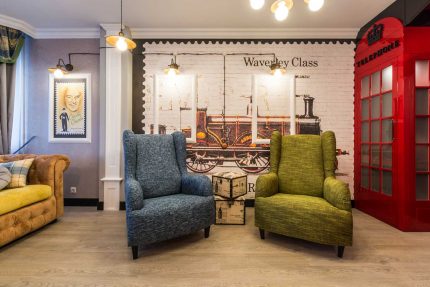
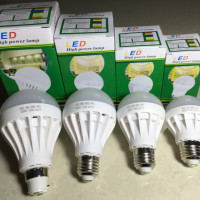 Characteristics of LED lamps: color temperature, power, light and others
Characteristics of LED lamps: color temperature, power, light and others 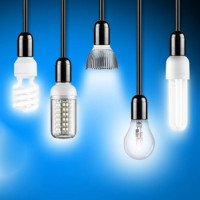 What types of bulbs exist: an overview of the main types of lamps + rules for choosing the best
What types of bulbs exist: an overview of the main types of lamps + rules for choosing the best 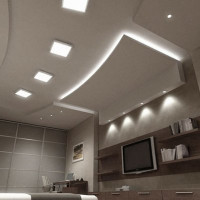 Bulbs for suspended ceilings: rules for the selection and connection + layout of lamps on the ceiling
Bulbs for suspended ceilings: rules for the selection and connection + layout of lamps on the ceiling 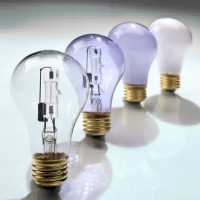 Halogen lamps: device, varieties, nuances of choice + review of the best manufacturers
Halogen lamps: device, varieties, nuances of choice + review of the best manufacturers 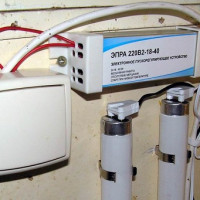 Electronic ballasts for fluorescent lamps: what it is, how it works, wiring diagrams for lamps with electronic ballasts
Electronic ballasts for fluorescent lamps: what it is, how it works, wiring diagrams for lamps with electronic ballasts  Bulbs for spotlights: types, characteristics, nuances of choice + best brands
Bulbs for spotlights: types, characteristics, nuances of choice + best brands  How much does it cost to connect gas to a private house: the price of organizing gas supply
How much does it cost to connect gas to a private house: the price of organizing gas supply  The best washing machines with dryer: model rating and customer tips
The best washing machines with dryer: model rating and customer tips  What is the color temperature of light and the nuances of choosing the temperature of the lamps to suit your needs
What is the color temperature of light and the nuances of choosing the temperature of the lamps to suit your needs  Replacement of a geyser in an apartment: replacement paperwork + basic norms and requirements
Replacement of a geyser in an apartment: replacement paperwork + basic norms and requirements
On sale, bulbs are usually chosen (among other parameters) according to the type of light emitted - white or yellow. And many are afraid to choose white, believing that it is cold. Not true! Most often, white is universal, since the declared color temperature does not exceed 4000 - 4500 K. Accordingly, they do not have a blue component that bothers many.
I don’t like yellow light because of its “blindness”, therefore I prefer lamps with neutral light, for a warm color - a night light, backlight (a kind of zoning).
As for the taboo on the use in one room (simultaneously) of light sources with different color temperatures, it is not so strict, a difference of no more than 1000 K is quite acceptable. Especially when it comes to overhead light.
Good afternoon, Gleb. I have to argue. The most natural light from incandescent lamps - their spectrum is almost 100 percent consistent with the sun. White is the “mixture” of everyone else.
That is, your statement that there is no "blue component" is wrong. The blindness of the “yellow” is explained not by less brightness, but by the property of the human eye, which processes the light flux with receptors. The latter are “tuned” by nature to the brightness of the prevailing colors of the world.
Now everyone is trying, even in the most budgetary repairs, to depict some kind of design, hence the sometimes terrible combinations of light sources of different temperatures, and many do not “sweat” at all with such a topic as the temperature of light. Like, it’s shining, and okay. What light was on the stock, and that took. And since the beginning of the 2000s, I remember an article in a medical journal, where it was said in plain text: the most natural light for the human eye is warm yellow. Or at least close to it.
Therefore, at my place cold light bulbs say categorically “NO”, and neutral - “YES”, but in a limited way, exclusively in the “business” areas of the house (entrance hall, living room, bathroom).So that the yellow lamp does not yellow so that everything around seems distorted and unpleasant, you just need to take a lamp more powerful, then the colors of the surrounding things practically do not change.
Good afternoon, Igor. I repeat the advice of Professor Preobrazhensky from "Dog Heart", adapted to the present - do not read the Internet, newspapers, magazines. Let me explain - a medical publication that claims that warm yellow light is the most natural, a little lies.
Visual analyzers of the creatures that inhabit our Earth were formed by sunlight. One is the most natural. And yet - energy-saving lamps pay off in rooms with long-term use. Toilet, bathroom are not.
Hello Vasily. Please tell me if the light with a color temperature of 4000k is suitable for 8-12 hours of work on a computer, provided that I am a bespectacled man. If not, why and what do you recommend? Thank.